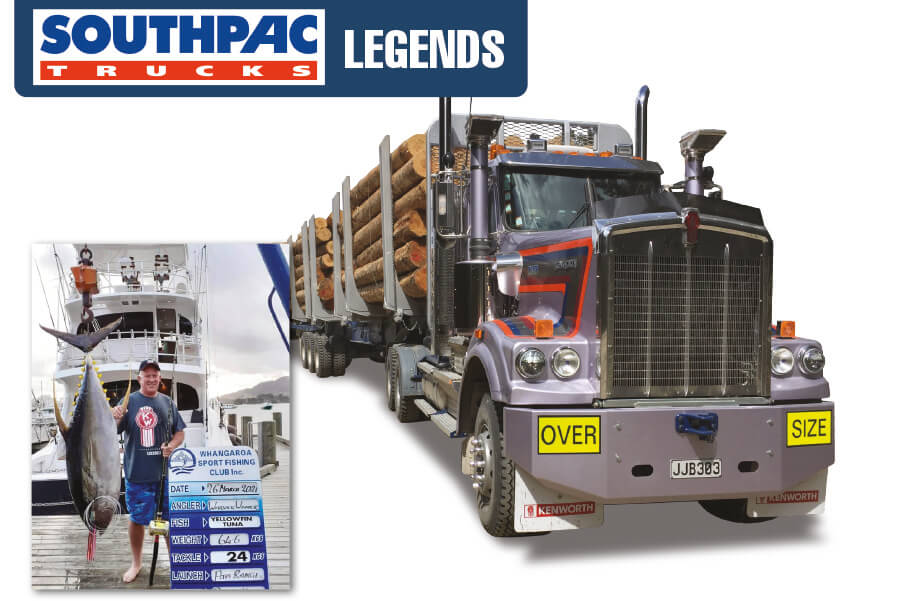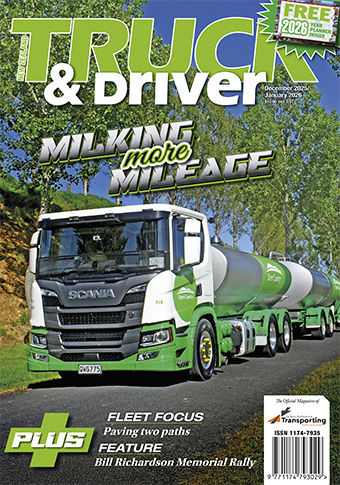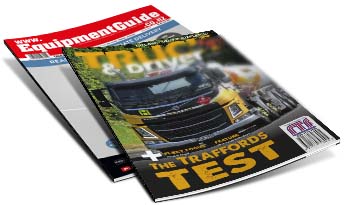Southpac Legends


Warwick Wilshier
Southpac Legends
In a career filled with memories and memorable achievements, Warwick Wilshier reckons some of the greatest highs have come from the way business competitors have often put aside financial differences to come together in a common cause.
“I’m particularly proud of what has been achieved with the LTSC (Log Transport Safety Council) and the respect and cooperative spirit of the logging operators,” he says.
“The camaraderie and respect between people in the log transport industry is huge, there is never that competitive edge when we are working on LTSC business. We all work together.”
The LTSC and associated organisations have played a massive part in Warwick’s life, and for the best part of a quarter century he has poured countless voluntary hours into their promotion.
...In a career filled with memories and memorable achievements, Warwick Wilshier reckons some of the greatest highs have come from the way business competitors have often put aside financial differences to come together in a common cause.
“I’m particularly proud of what has been achieved with the LTSC (Log Transport Safety Council) and the respect and cooperative spirit of the logging operators,” he says.
“The camaraderie and respect between people in the log transport industry is huge, there is never that competitive edge when we are working on LTSC business. We all work together.”
The LTSC and associated organisations have played a massive part in Warwick’s life, and for the best part of a quarter century he has poured countless voluntary hours into their promotion.
He recalls the formation of the LTSC, born of a critical situation with lugging truck rollovers occurring on a near-weekly basis: “About 1996 I was on board of the Logging Industry Research Organisation (LIRO), representing the RTA. It was apparent that research would be the key to addressing the problem, so the early meetings that led to the formation of the LTSC were hosted by LIRO with the support of all parties – forest owners, management companies, trailer manufacturers and of course the transport operators.”
Because Warwick was already on the board of LITO he was also involved with the LTSC from its inception. He was a founding member and has been its chairman for more than 20 years. He is also on the board of Ia Ara Aotearoa/Transporting NZ.
Safety initiatives that have since been developed and introduced by the LTSC include static roll threshold rating for trailers, sleep apnoea testing for drivers and campaigns like Share the Road and Fit for the Road aimed both at public perception and truck driver attitudes.
Warwick says the situation in the late 1990s wasn’t ideal, but the LTSC has been instrumental in making great improvements: “A lot of credit goes to the operators and the drivers who took responsibility for the situation and acknowledged that they needed to step up to the plate to solve their own problems, and we did.
“There were times when we could have left the Government agencies to bring in changes and regulations on their own, but that wouldn’t have been ideal. And the authorities, too, played an important role, by guiding and helping us to develop our own answers, instead of coming in heavy-handed, so they need to take a lot of credit as well.”
He has a regret that the same attitude is not present across the board: “I’m disappointed that we’re not seeing the same level of togetherness in the wider road transport industry, with the rivalry between the various industry associations. Transporting NZ and the National Road Carriers probably needed to separate to sort a few things out, but I’m eternally hopeful that we can come back together to be a single industry body. The ideal would be to leave personalities at the door and work together for the benefit of the industry.”
Warwick’s tireless work with the LTSC has been recognised by an outstanding industry achievement award for service to log truck safety from the Institute of Road Transport Engineers of New Zealand (IRTENZ), and in 2020 he was inducted into the NZ Road Transport Hall of Fame.
Now 62, Warwick trained initially as a mechanic with the Statecraft Waipa Mill. But his interest lay more on the transport side, so when in 1982 he got the opportunity to set up as an owner/driver delivering to the mill he jumped at the chance.
The truck was a White Road Boss, fitted with an NTC350 Cummins. Though Australian-built, it had been imported in SKD (semi knocked down) form and finally assembled in Rotorua. At the time, the White was barely 18 months old...and 40 years on he still owns it!
Nor was it retired from work after just a handful of years, for after its frontline logging duties finished the unit spent several more years shifting off-highway trailers around the yard. As Warwick points out, it has always had a certificate of fitness, and is currently in the process of being rejuvenated.
Warwick owns another oldster that’s equally significant to his personal history. It’s a 1985 Kenworth W924, the first new Kenworth bought by Williams & Wilshier, a partnership with Garry Williams that was to last 22 years.
The W924 has demonstrated even more longevity than the White, and still works every day as a yard truck with Williams & Wilshier Transport.
Both trucks are treasured, says Warwick and are kept under cover as much as possible: “They are very much the key to our company heritage, and we want to keep them in as good a condition as possible.”
The Williams & Wilshier partnership kicked off in 1984, with the company carting logs to Kinleith, Kawerau and McAlpines in Rotorua. In 1989, following the collapse of Transpac, Williams & Wilshier bought the logging business of Transpac subsidiary Transport (North Canterbury) in partnership with McCarthy Transport, forming McCarthy Wilshier Transport (MWT). As a major customer, McAlpines was also a shareholder in the enterprise, which Warwick shifted from the North Island to manage.
The association with McCarthy Transport was broadened in 1994 with the formation of Rotorua-based Paragon Haulage, which began operations in Kaingaroa but not long after expanded into Northland and the East Coast servicing primarily Carter Holt Harvey. At its peak, recalls Warwick, Paragon was running around 70 trucks in Whangarei and Thames.
Warwick returned from Canterbury in 1998 to oversee Paragon, but after a restructuring of CHH in the early 2000s that led to a significant reduction in the timber harvest, the company was sold.
With five children, four of them daughters, family activities have always played a big part in Warwick’s life. He’s also grateful for the opportunities to travel overseas that being involved in the transport industry have given him. He has fond memories of Sweden, he says: “We were using Steelbro self-loader cranes that were developed in Sweden, and I had several trips there during which I made some great friendships.”



 + EQUIPMENT GUIDE - FREE
+ EQUIPMENT GUIDE - FREE
